Most railroad jobs in Washington can be found on the BNSF railway. There are also Class I Union Pacific, Amtrak, one regional, and plenty of class III shortlines too. Let’s explore your options in greater detail.
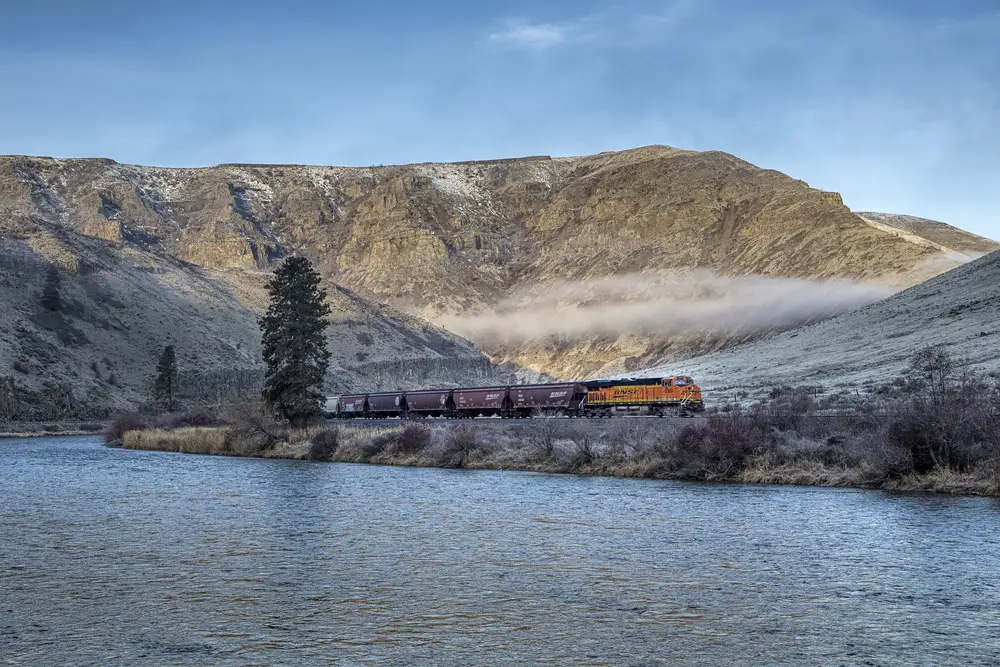
If you’re looking for railroad jobs in Washington, then you’re at the right place. You can find many railroading opportunities in the state.
Most of your options will fall under the two major class I freight railroads. These are BNSF and Union Pacific. These two companies dominate the state’s railways, taking up around two-thirds of them.
However, there is also one class II regional, the Montana Rail Link.
And finally, the rest of Washington’s rails are run by some class III shortlines.
Passenger jobs are also available. Amtrak runs in the area, which is a high-grabbing opportunity. Sound Transit is another passenger train you can consider too.
All in all, Washington totals around 2,300 miles of freight trackage. The state ranks 20th in terms of mileage in the country.
Washington has one of the most interesting histories, too. It housed the famous Milwaukee Road. And at its heyday in the 1970s, it had more than 5,000 miles of trackage!
These played a crucial role in Washington’s economic development and trade. Nonetheless, its legacy endures in the modern economic world and among train enthusiasts.
Therefore, Washington is a great area for anyone seeking a career in the industry. And overall, the railroad industry is a promising field to build a career in.
That’s why we’re here to help job seekers like you! Today, we outline all your possible opportunities for railroad jobs in Washington.
We go through all the companies you can apply for. The role of the railroads in the state’s economy is also discussed. And finally, we provide some introductory industry tips too.
Let’s begin.
4 Major Economic Impacts Of Railroads In Washington
Having a good grasp of the state of railroads is crucial. This will give you a better understanding (and hopefully more appreciation) of the industry as a whole.
It’s more than just a mode of transportation. The railroad also affects the following important economic factors:
1. Connects Markets and Promotes Local Commodities
Washington’s rail freight is pretty diversified, from wood to food to paper. It transports thousands worth of carloads per year. Here are the numbers from 2019:
- Intermodal – 650,000 carloads yearly
- Wood – 26,000 carloads yearly
- Gas and petroleum – 17,000 carloads yearly
- Agricultural commodities – 14,000 carloads yearly
- Paper – 12,000 carloads yearly
The state is also twice more export-efficient than a typical U.S state. Washington plays a significant role in the Port of Seattle. Here, it handles imports from places all over Asia.
2. Freight Carrying Capacity
One freight train can move twice (even thrice) as much as one truck. In 2019, the state moved 133 million tons of freight through trains. This amount would’ve required 7 million more trucks if transported through trucking.
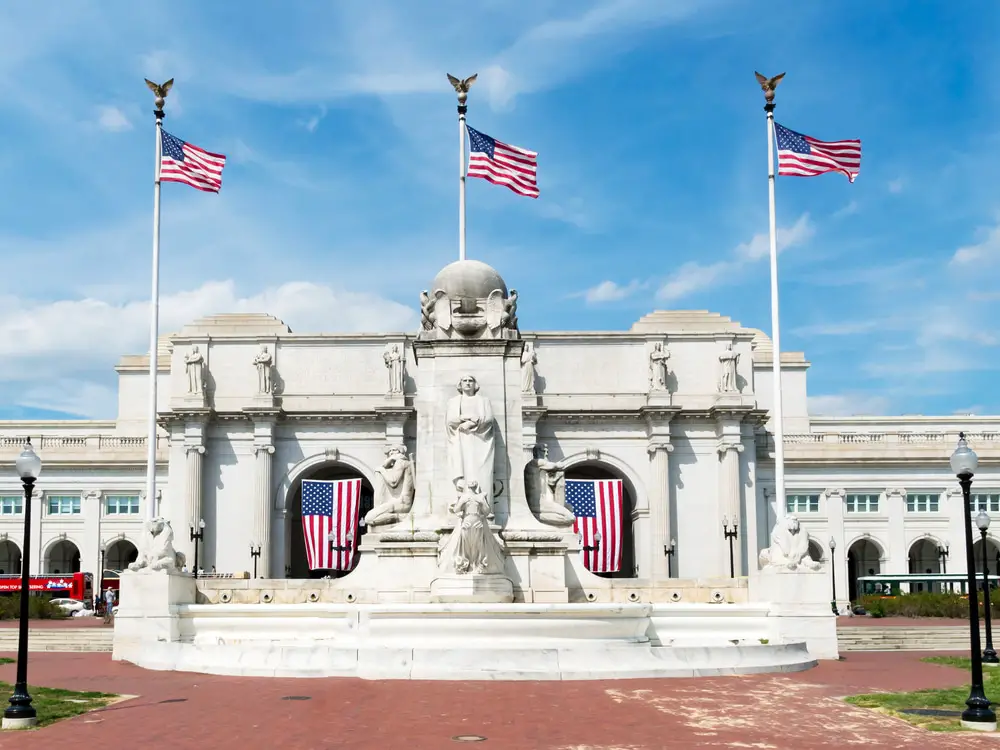
3. Preserves Infrastructure, Reduces Congestion and Pollution
According to GoRail, Washington’s rail can eliminate 1 million cars on the state’s main roads. Can you imagine how much traffic that can lessen?
Moreover, this highly benefits the preservation of infrastructure. There can be lesser upkeep and maintenance. Therefore, government finances or taxes can be spent on other things.
Furthermore, this also affects the state from an environmental standpoint. It can prevent about 5 million tons of greenhouse emissions. And 1 million cars is equivalent to planting nearly 90 million trees!
4. Creates Employment
Amtrak, BNSF, and Union Pacific are large, great-standing corporations. As such, these networks alone employ a huge amount of people. In 2020 the freight rail industry employed over 135,000 people!
Furthermore, the business is well-known for having competitive wages. As a result, employees may enjoy a higher quality of life.
Railroad Jobs in Washington For Beginners: 2 Major Things To Expect
Are you freshly coming into the railroad industry? If so, the following might be useful.
Railroading is not completely what people make it out to be. Yes, it seems exciting. And yes, you will get to visit many landmarks and travel often. But, the work itself is not for everyone.
1. Lifestyle Change
Class I railroad jobs may be both mentally and physically tiring. These train companies are the largest and run around the clock. Consequently, the majority of class I railroaders put in longer hours.
This isn’t a Monday-Friday, 9-5 situation, either. If needed, you can be called into work any time of the day. Even on weekends. Sometimes, you work on holidays. And depending on the situation, the company can transfer you to another area.
So, be prepared for a substantial lifestyle change. This means more hours away from home and family.
1. Good Benefits and Career Path
Now, jumping off from the points above. Class I positions do provide the highest wages in the industry. On top of these are also retirement programs and other benefits. And these can be more than what you’d get from a corporate job.
Therefore, your hard work gets paid off really well. And after a few years, you can even earn a six-figure wage. Find out which railroad occupations pay the highest by clicking here.
And of course, you get years worth of expertise, learning, and experience. Most railroad jobs don’t even need experience for first-time applicants. They offer on-the-job training.
I personally think that’s hard to beat. And add to that the scenic views and different places you get to see can make for a interesting and fulfilling railroad career.
Looking forward, you’ll be able to say that you’ve traveled to almost all states. Perhaps even Canada, Mexico, or the District of Columbia!
These are considerable points if you’re just starting out. So, truly think about it.
At the end of the day, the choice is yours to make.
One piece of advice we can give you, though, is to look at the big picture. Analyze the benefits and experience from a larger perspective. From here, you might see that the pros outweigh the cons.
So, without further ado, let’s take a look at your options for railroad jobs in Washington.
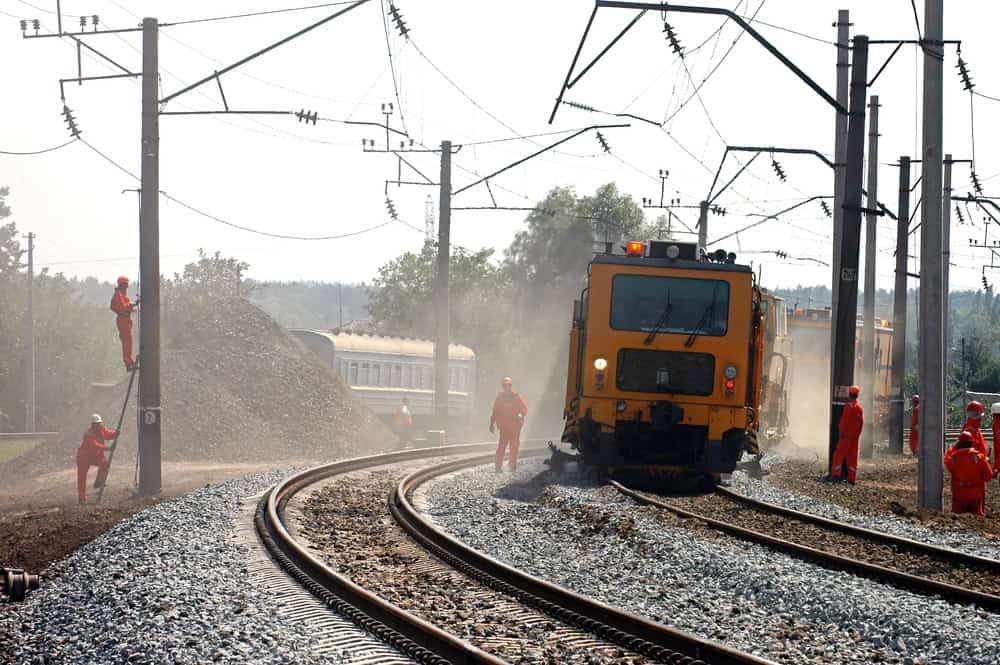
Class I Railroad Jobs in Washington
BNSF Railway
The Burlington Northern and Santa Fe Railway is a huge and significant freight railroad in North America. They fall under the seven Class I railroads, totaling 35,000 miles of trackage. Their routes span 28 states.
BNSF operates around 1,400 miles of track in Washington. This accounts for 44% of the state’s whole rail network.
The railway services seven primary areas in the state. Three of them go east to west. On the other hand, one runs north to south approximately parallel to Interstate 5. And finally, nine have a lower population density but nevertheless receive some service.
These corridors are connected by a handful of key lines.
Learn more about them on their website. Click here.
Union Pacific
The Union Pacific railroad totals 32,100 miles of trackage in the USA. They are also, by far, the largest railroad in North America. This class I railroad company services 23 western states.
And in Washington, they operate over 500 miles of track. That’s about 16% of the state’s network. They also have operational rights within the tracks of BNSF. These are located at Spokane and Lakeside Junction. And finally, they operate their own tracks at Tukwila stretching to Tacoma.
Most of their hauled commodities are intermodal, municipal waste, car parts, and construction materials.
Class II Regional Railroad Jobs in Washington
Montana Rail Link
Montana Rail Link, or MRL, is the only operating Class II railway in Washington. This railroad is also privately owned and part of Washington Companies. Their trains run on trackage constructed by Northern Pacific.
All in all, this regional railroad totals 937 miles of trackage. Their routes travel mainly inside Montana. Their main line also goes through Livingston, Missoula, Billings, and Helena.
And finally, their lines also connect with class I BNSF in Garrison.
This is a relatively large regional, with many opportunities for railroad jobs. In fact, according to data, they have approximately 1,000 staff.
Click here to learn more about them.
Class III Shortline, Terminal, and Switching Railroad Jobs in Washington
Ballard Terminal Railroad
The Ballard Terminal Railroad (BDTL) mainly runs two shortline terminals in Washington. They service companies along Seattle. All in all, this shortline runs only 3 miles of trackage.
Cascade & Columbia River Railroad
This shortline is a part of Genesee & Wyoming’s roster of shortlines. Overall, they operate 100 miles of trackage, which is larger than most shortlines in the area. It travels through the areas of Rocky Reach and Oroville. And from this line, it also connects with BNSF. Learn more about CSCD from the Genesee & Wyoming website.
Central Washington Railroad
The CWRR shortline mainly services in Yakima. They total 80 miles of trackage. Furthermore, they are privately owned by the Temple Family. These are the same owners of the Columbia Basin Railroad.
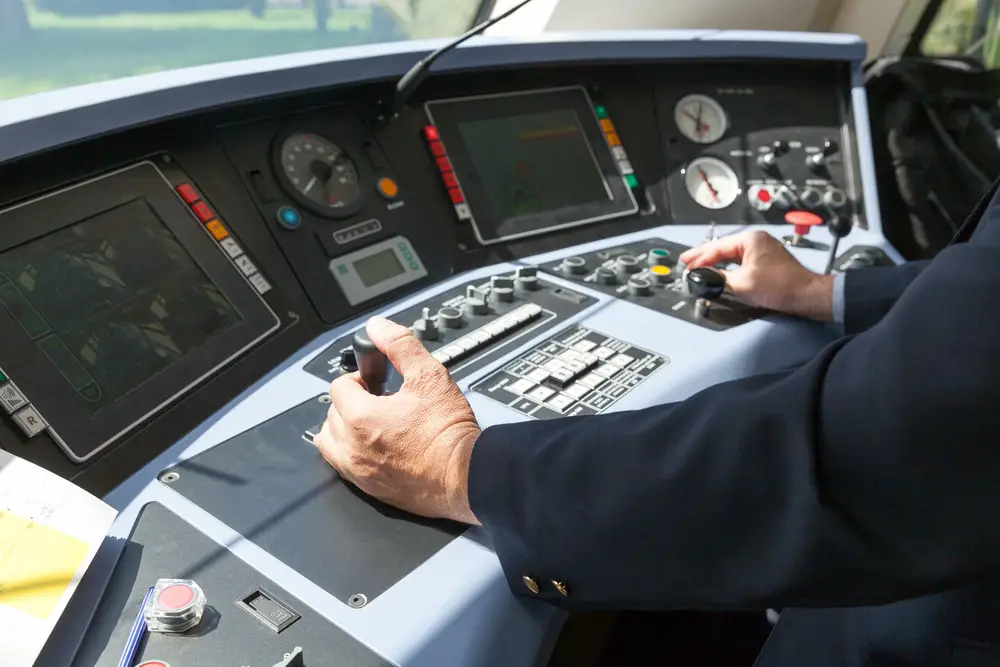
Columbia & Cowlitz Railway
This is a Patriot Rail-owned shortline. CLC operates a total of 8.5 miles of trackage. This shortline primarily services the Weyerhaeuser Company mill to Kelso. And along the side, their traffic switches to the old Weyerhaeuser Woods Railroad.
Columbia Basin Railroad
This shortline is owned and operated by the Temple Family, as mentioned above. Overall, this railroad totals 73 miles of track. Its routes span from Moses Lake, Connell, Schrag, Warden, and Othello.
Learn more about them through their website. Click here.
Great Northwest Railroad
This shortline is part of Watco’s roster of shortlines. The Great Northwest Railroad totals 77 miles of trackage. Their freight trains travel around Idaho, Riparia, and Lewiston. They also do interchanges with the two Class I railroads in Washington.
Kettle Falls International Railway
OmniTRAX owns the Kettle Falls International Railway (KFR). This shortline titles in 160 miles of trackage. Their routes stretch to the following areas:
- Chewelah
- Southern Canada
- Columbia Gardens
- Grand Forks, British Columbia
So, if you’re looking for a shortline with routes that stretch pretty far, give this a try. Contact the company or OmniTRAX directly for more information.
Meeker Southern Railroad
This shortline only operates five miles of trackage. The Meeker Southern is owned by Ballard Terminal. For career inquiries, contact the company directly. You can also visit their headquarters on Ballard Avenue.
Mount Vernon Terminal Railway
Mount Vernon Terminal, or MVT, is a terminal railroad. Their trains run on the tracks of Mount Vernon Terminal Railway. They also do interchanges with BNSF.
Palouse River & Coulee City Railroad
The PCC is a Watco-owned shortline. They run a relatively long line, totaling 200 miles of trackage. These lines are unconnected, spanning areas through Western Idaho. Some tracks are also located in Northeastern Oregon.
Pend Oreille Valley Railroad
The Pend Oreille Valley is a privately owned shortline. Their tracks run on abandoned trackage from the famous Milwaukee Road. This runs through Newport, Metaline Falls, and all the way to Idaho.
Passenger Railroad Jobs in Washington
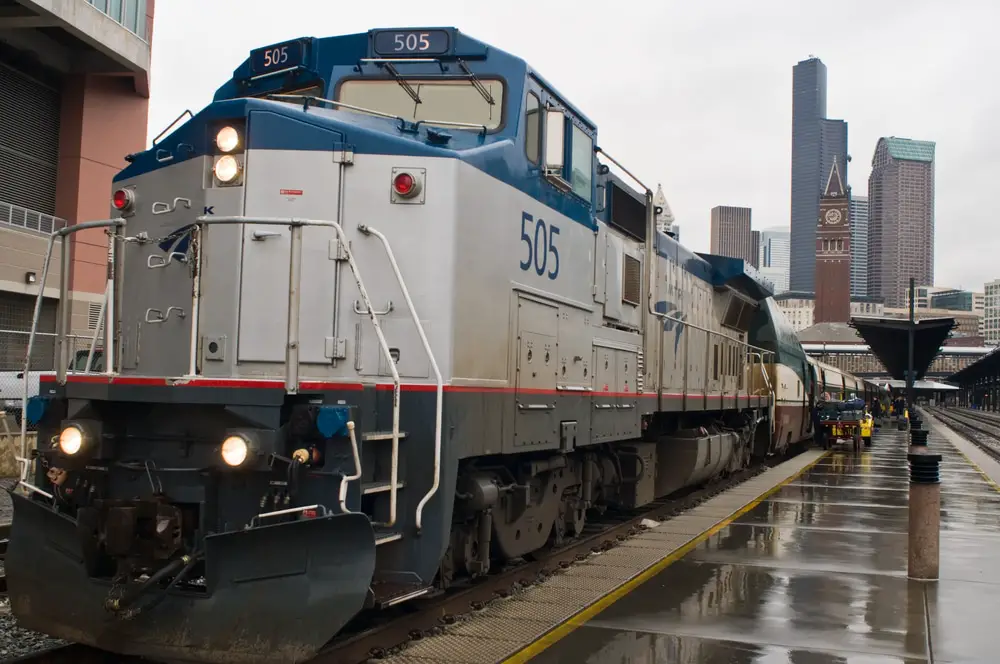
Amtrak
Washington is a great area for passenger railroad jobs in Washington. There are a plethora of stations in the state. Three of its routes also offer rail service. These include the Coast Starlight, the renowned Amtrak Cascades, and the Empire Builder. Their stations in Washington include:
- Bellingham
- Bingen
- Centralia
- Edmonds
- Olympia
- Pasco
- Seattle
- Ephrata
- Tacoma
- Tukwila
- Vancouver
- Everett
- Kelso
- Leavenworth
Start Your Railroad Career With These Railroad Jobs in Washington!
There you have it, your options for railroad jobs in Washington. By now, you can surely tell that you have a lot of them.
With BNSF, Amtrak, and Union Pacific alone, you already have higher chances. You also have many shortlines at your disposal, which is great if you’re really exploring your options.
So, contact these companies if you’re interested in working with them. You can also view other places to apply for railroad jobs here.

